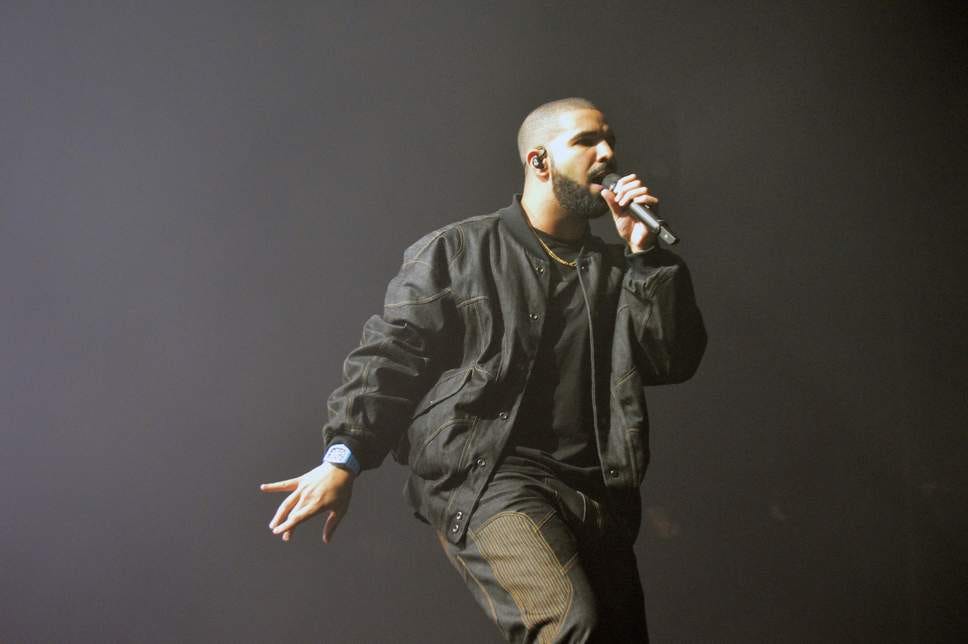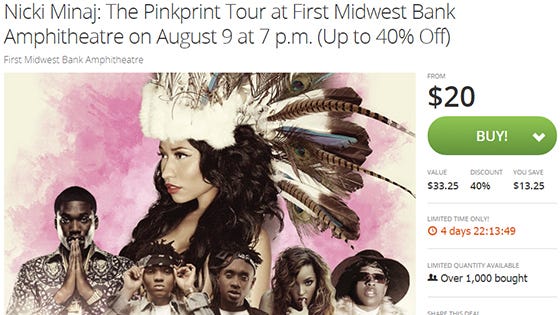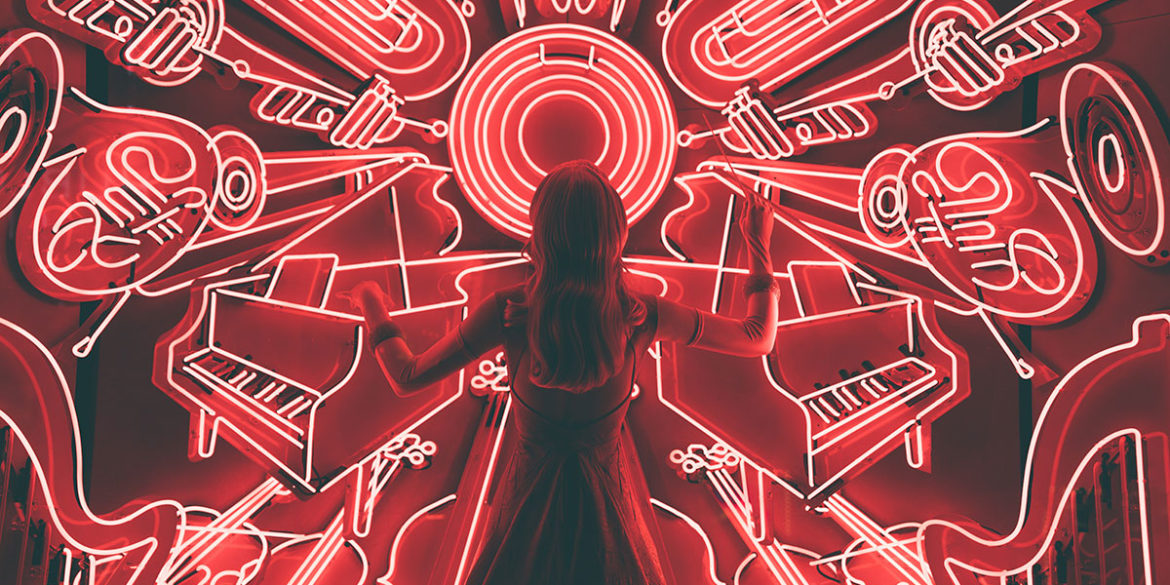Featured Photo by Erin Yasmeen
A bankable, sold-out tour takes good economic perspective, justified optimism, and the ability to keep it 100.
No one was surprised when hip-hop’s biggest artist and most popular group announced they were going on tour together. This is how Drake operates. He patiently waits for absolute certainty. The Migos, like Drake, are a chart-topping act that could headline a nationwide arena tour on their own. But instead of putting this star-studded lineup in stadiums and ballparks to make more money, Aubrey & The Three Migos is contained to the same arenas that Drake has performed in this entire decade.
Live performances are how artists earn their money. Drake’s conservative approach protects his money and reputation, but there’s a cost associated with playing it safe. On the other hand, overly-optimistic artists can book larger venues and earn more with less effort, but they risk booking arenas and stadiums that they can’t fill.
The best approach is for artists to be moderately optimistic. Artists should accurately meet demand as best possible, and account for a few extra seats in case they slightly exceed expectations. Each artist should have confidence that fans will show up, but within reason.
It’s highly unlikely that someone who needs an email from Groupon to attend a Nicki Minaj concert would become a die hard member of the Barbz.
The cost of being too conservative
Drake told MTV in 2011 that he avoided stadiums to keep his venues intimate, but that was a long time ago. Long before Drake prioritized money over accolades and played it safe with his co-headliners. Before Migos, he toured with his Young Money running mate Lil’ Wayne in 2014, and Future in 2016 (peak “March Madness” Future). His goal is to ensure that each concert ticket is in high demand.
But instead of matching that demand with stadium-level supply, Drake adds additional 20,000-person capacity arena shows in select markets as appropriate. At the Summer Sixteen Tour, he performed multiple shows in 14 of its 34 cities. This gives him flexibility, but the cost of that flexibility is outmatched by two factors: the cost to put on each additional show, and opportunity cost of the Drake’s time.
According former Billboard writer Ray Waddell, an artist like Drake is in prime position to level up:
Determining which artists can fill these mega-venues ultimately comes down to demand in a given market, and factors taken into consideration include an artist’s box-office history there, as well as those of similar acts, along with album sales and radio play… The thin margins of touring — as little as 1 percent of gross for a promoter and no more than 30 percent for the artist — require that a stadium play make more financial sense than a double- or triple-date appearance at an arena.
Two weeks ago, Aubrey & The Three Migos performed four shows in Madison Square Garden and three shows at the Barclays Center in Brooklyn. According to Deadspin, it cost $400,000 in 2006 to rent Madison Square Garden. With inflation, that’s just under $500,000 in today’s dollars. If we assume that rental costs are the same at Barclays, that’s $3.5 million in venue rental costs for the seven shows. These shows were spread across eight nights, which means at least nine nights of hotel and hospitality costs for the entire team in New York City. That’s easily totals over $500 per person, per night.
Instead of hosting these short-term residencies in different NYC boroughs, Drake and Migos can meet the same demand with two concerts on back-to-back nights at the 82,500-person capacity MetLife Stadium in East Rutherford, NJ. According to Waddell, stadium rental costs for concerts are $1.2 – 1.8 million. On average, that $1.5 million rental fee is $3 million total for both nights—less than the estimated $3.5 million that was spent.
There’s also an opportunity cost benefit of performing in larger stadiums. The Summer Sixteen Tour took over three months to gross $84 million from 57 shows. Aubrey & The Three Migos is expected to earn similar. Meanwhile, a stadium tour could have earned that $84 million with 20 shows or less. Drake could have performed those 20 stadium shows in one month— almost one-third of the time. With all that extra time, Drake could have went back in the studio, worked on other projects, spent time with his child that he was hiding.
Fewer shows would also be better for Drake’s physical health. His doctor ordered him to cancel the last seven shows of the Summer Sixteen Tour due to an ankle injury. He never disclosed the reason for injury, but it’s probably linked to him jumping across stages to hype up crowds at 50 different concerts in 80 nights. Keep in mind, this injury happened before Drake turned 30. Random nagging injuries are bound to happen more often, not less, for the 31-year-old Champagne Papi.
It’s too late to adjust Aubrey & The Three Migos, but Drake needs to leave the arenas he’s grown to love and step up to stadium status—especially in cities that he’s performed multiple arena shows at.
The risk in over-estimating demand
On the other side of the spectrum, Nicki Minaj has had to pivot because there was not enough demand to fill the venues she booked.
In 2011, she opened for Britney Spears on the Femme Fatale Tour. For several shows, LiveNation placed the tickets on Groupon and sold them for steep discounts. When the Groupon deal was announced, a spokesperson for Live Nation claimed that, “Offering a deal on Groupon is not a reflection of the quality or status or sales of a show” but rather “segmented marketing and a way to reach new and additional consumers.”
There’s truth to this, but it was also an attempt to control the narrative. Regardless of any market segmentation, Groupon deals still signals that discounted tickets are needed to boost demand for a concert.
According to former Billboard writer Dean Budnick, these types of deals are most beneficial for Live Nation. “For Live Nation, this is really about selling parking, beer and hot dogs. That’s where the extra 1,000 people in the venue at discounted prices will really pay off,” said Budnick.
It makes sense for Live Nation to use Nicki as a loss leader to earn higher profit margins from concessions, but that doesn’t benefit Nicki—the artist’s name that’s tied to the deal. Even if Nicki got paid her same rate for a Groupon-assisted show, she was still a “Groupon rapper”. Industry experts might understand the strategy, but the general public thought she was struggling to sell tickets. Since both situations can be true, perception can easily become reality.
It’s also been widely studied that Groupon discounts create minimal long-term impact for businesses, especially established ones. It’s highly unlikely that someone who needs an email from Groupon to attend a Nicki Minaj concert would become a die hard member of the Barbz.
For better or worse, Groupon continued to be a go-to sales channel for Barbie. In 2015, tickets for The Pinkprint Tour with Meek Mill (AKA the “is that a world tour or your girl’s tour?”) were also sold at steep discounts on Groupon.
Nicki’s upcoming concert has not been Groupon-assisted (yet), but it has had early challenges. The NICKIHNDRXX tour with Future was supposed to start next week, but they postponed the North American leg until 2019. In a lengthy Instagram post, Nicki said that she needs more time to rehearse due to the delays with her album release. But sources from Live Nation pulled the receipts and claimed otherwise:
“Nicki’s tour looked to be the most disappointing ticket sales of the year for any artist. She and Future were booked in big arenas with around 20,000 capacities.
“[As of August 21], sales for opening night in Baltimore were just 2,000 tickets. LA was 3,400 – for a 17,000 capacity venue – New Orleans 1,000, Denver 1,300, Chicago 3,900. Even Nicki’s hometown of New York City, the Barclays Center (which has a capacity of 19,000) sold only 5,050 tickets.”
Nicki can address her touring challenges by choosing smaller venues, performing less shows, or both. It’s a tough pill to swallow, especially since she has spent the past month taking shots at anyone who has threatened her position, but she would be much better off.
Beyoncé went from conservative to optimistic
A few years ago, Beyoncé, like Drake, once played it safe with concert tours. In 2013 and 2014, The Mrs. Carter World Tour earned an impressive $230 million, but it took Queen Bey 132 shows and twelve months of touring to do so. She also performed multiple arena shows in the biggest markets, facing many of the same challenges as Drake.
Just a few months after the tour ended, she upped the ante. Her and Jay Z booked football and baseball stadiums for the On The Run Tour. It was a leap for both Carters, since they both had spent most of their careers on the arena circuit. The leap clearly paid off; the extra capacity allowed them to gross $109 million from 21 shows in less than three months.
Beyoncé hasn’t looked back since. In 2016, The Formation World Tour earned $256 million from 49 shows in five months. She was the first woman to headline a concert in many the stadiums she performed in. This year’s On The Run II Tour is expected to earn $200 million from 48 shows. It’s safe to say that Beyoncé wouldn’t be caught in an arena again unless she’s sitting courtside watching her friend LeBron James play basketball.
Had Beyoncé subjected herself to the same arenas for her past three tours, she would have needed to perform an additional 207 shows since 2014 to match the $565 million her concerts have grossed in revenue. It would have been impossible to do all those shows while pregnant with the twins, make Lemonade, and do all the other stuff Beyoncé does.

The right touring strategy and venue selection can dictate whether an artist and their team celebrates the final show with a dinner at Nobu, or orders takeout because they’re exhausted from a stressful tour. An arena or stadium tour is not for everyone, but the same supply and demand principles hold for performances in amphitheaters, ballrooms, or nightclubs.
Groupon will continue to be a channel for artists to fill those venues, since the Live-Nation-Groupon partnership is still going strong. But know that there’s a reason why Aubrey & The Three Migos or On The Run II tickets aren’t showing up as flash deals in your inbox.









